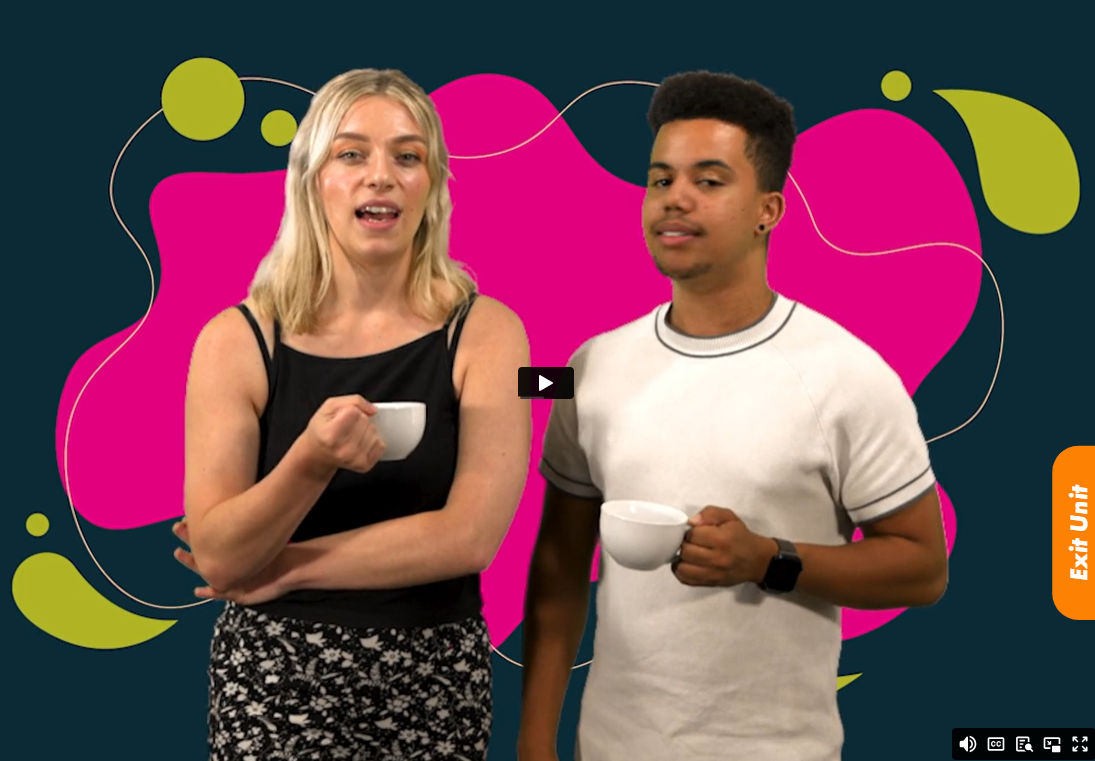
Thinking about producing a bespoke e-learning course? Here are some practical suggestions on using video to enrich the learning experience.

TL;DR
Most learners (whether students or employees in the workplace) would agree that e-learning is more engaging when text content is supplemented by appropriate images, audio – or video. We look at alternative ways of doing this.
Charles Shields
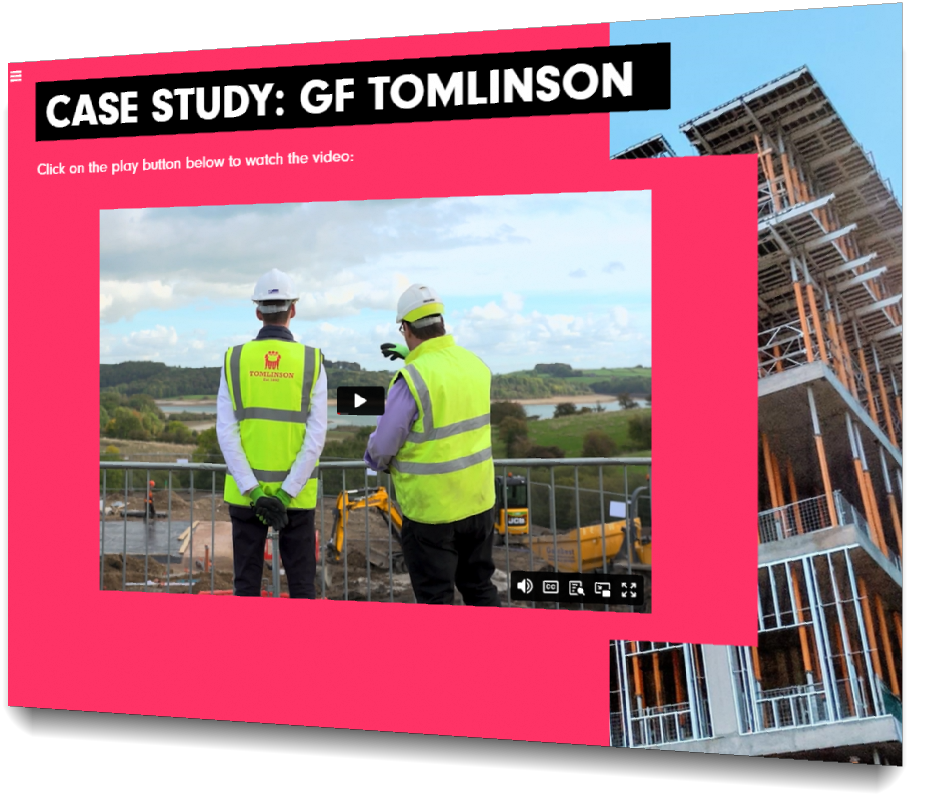
Show; don’t tell.
This principle of engaging storytelling can also be applied to the design of e-learning courses.
There has been a tendency to use lengthy sections of text to explain to learners why they have to know or do something in the workplace, then follow this up with an end-of-section assessment to check they have remembered the information.
But these learning outcomes may be more effectively communicated through the use of appropriate video content that can engage the learner at an emotional level.
Clearly the budgets available to produce e-learning courses – whether bespoke for an individual organisation, or for sale as off-the-shelf courses – do not stretch to Netflix production values.
But there are a variety of ways to make creative use of video, whether that is existing content or specific to the current project, without blowing your budget.
Our regular collaborator Dan Lamoon from video production company Colab Creation will have more to say about this in future blog posts – but for now here are our Top 10 Tips on using video:
- Don’t assume that all video content needs to be professionally produced. (Sorry Dan!) If you follow some simple guidelines, self-produced smartphone videos can have a real impact because of their authenticity.
- Audio clarity is more important than video quality as such.
- A ‘talking head’ introduction to your course, along with video introductions to each section and a summary clip, can really help to personalise a course. If you have an expert on the topic within your organisation, get them to record these videos.
- If the course is focused on a Standard Operating Procedure (SOP) within your organisation, a video or set of clips showing the different stages can be much more effective than a text-based description.
- Video case studies contextualise the learning making it easier for learners to relate it to their own circumstances. At the top of this post is an example of a video case study from the Leading Wellbeing in the Workplace course we developed for the University of Derby Work Health Hub, with video production by Colab.
- Employee Onboarding / Induction: one of the difficulties facing HR teams trying to provide new staff with effective inductions is that it is often impossible to get members of the Senior Leadership Team in a room at the same time. Video interviews with colleagues in key roles across the organisations are a great way of making the onboarding programme feel more welcoming to new starters.
- Animated explainers: there are many DIY tools enabling engaging explainer videos to be produced, or you may consider getting your e-learning supplier to do this for you. Either way, they can be effective in communicating key concepts.
- Scenario-based learning: where you are producing a course on a topic such as customer service or ‘having difficult conversations’, video scenarios can work really well, with breaks in the action where the learner is prompted to choose how to respond. This will generally work best if professionally produced using actors, so tends to be more expensive.
- Using 3rd party content: it goes without saying that you will find videos on virtually any topic relating to your training needs on YouTube. In many cases, the video settings allow the video to be embedded in another webpage, eg your e-learning course. However, you do need to be ensure that the YouTube account you are embedding from is actually the owner of the video; and links to 3rd party content do tend to break. Also, you don’t have control of the related videos that appear at the end, so there is the risk of your learners getting distracted by something else.
- It might be possible to re-edit and repurpose videos produced by your Marketing team for training; the same may apply in reverse.
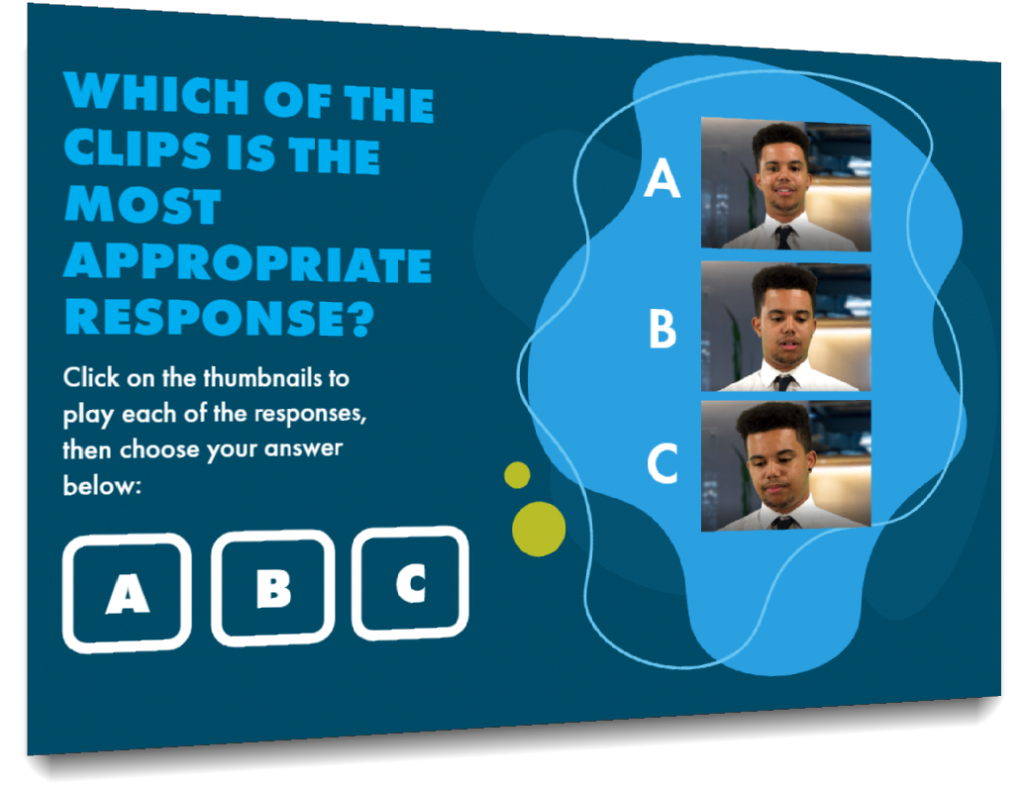 Here’s a scenario-based e-learning example from the Employable Me course we created for Young Enterprise, with video production by our partners Colab Creation. In this module Shine in the interview, learners (who are Year 9-11 pupils) work through the video of an interview, choosing the best response at various stages.
Here’s a scenario-based e-learning example from the Employable Me course we created for Young Enterprise, with video production by our partners Colab Creation. In this module Shine in the interview, learners (who are Year 9-11 pupils) work through the video of an interview, choosing the best response at various stages.
This approach gives learners the opportunity to put into practice some of ideas covered earlier in the course, in a safe environment.
 Enriching online learning through the art of video storytelling
Enriching online learning through the art of video storytelling
Enriching online learning through the art of video storytelling
 Getting into the right mindset for supporting people at work
Getting into the right mindset for supporting people at work
Getting into the right mindset for supporting people at work
 Language Matters: The Impact of Language Barriers on Employee Wellbeing
Language Matters: The Impact of Language Barriers on Employee Wellbeing
Language Matters: The Impact of Language Barriers on Employee Wellbeing
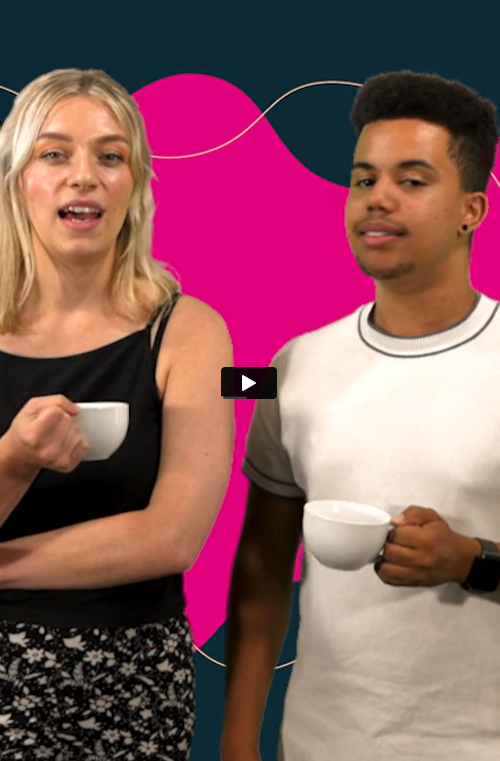 Top 10 ways to use video in e-learning
Top 10 ways to use video in e-learning
Top 10 ways to use video in e-learning
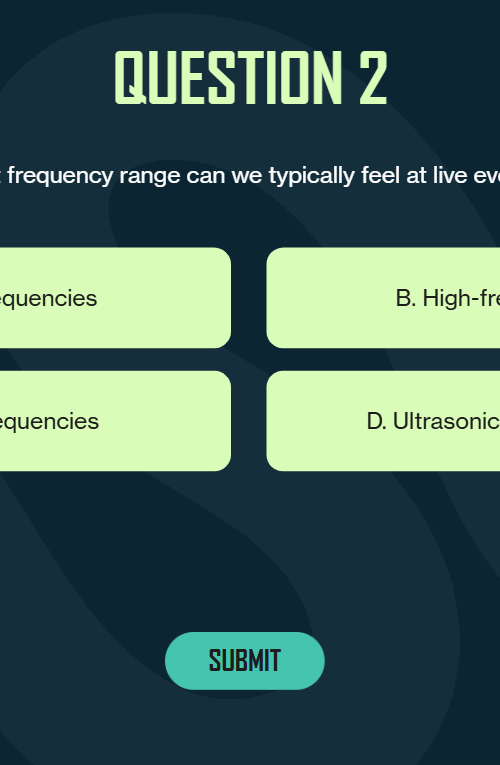 Designing effective Multiple Choice Questions
Designing effective Multiple Choice Questions
Designing effective Multiple Choice Questions
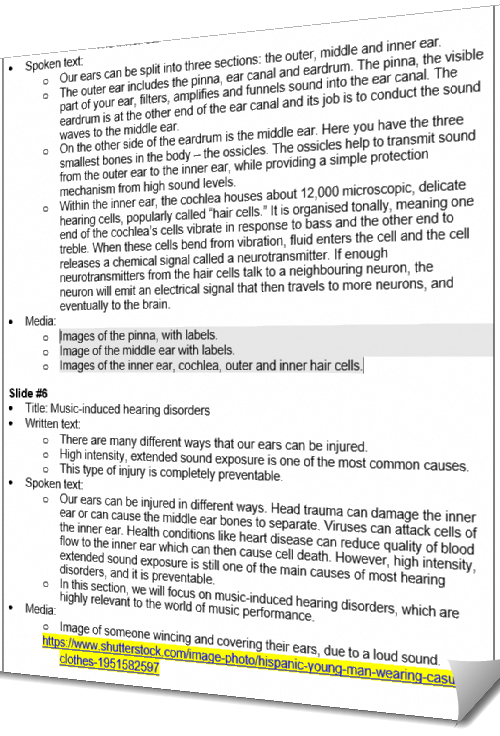 What is storyboarding?
What is storyboarding?
What is storyboarding?
 Addressing the management skills gap
Addressing the management skills gap
Addressing the management skills gap
 E-learning pass marks – how good is good enough?
E-learning pass marks – how good is good enough?
E-learning pass marks – how good is good enough?
 How not to do tech support
How not to do tech support
How not to do tech support

Got you thinking?
Great! That was the idea.
If you’d like to follow up – even if it’s just to tell us why you disagree! – we’d love to have a Zoom chat over a coffee.


